Time and time again, you hear how critical a good oil sampling practice is to the success of an oil analysis program. No matter how good your oil analysis methodologies are, all efforts mean nothing if your data are garbage. So, what makes a good oil sampling practice? Here are the guidelines to follow:
Getting Started
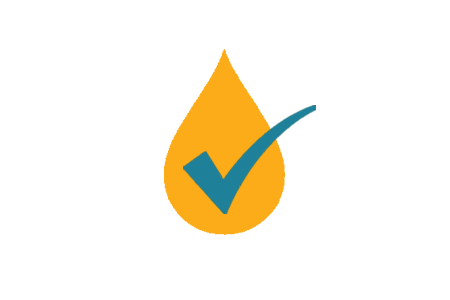
To start your program, create a baseline for your oil samples by submitting a new or unused sample as your reference. Your new oil should never have been used or taken from the inside of a machine, running or not.
Safe Sampling
The first goal is to keep everyone safe. Observe all safety protocols and wear the appropriate personal protective equipment. Even with safety measures, traditional sample methods can still be hazardous. These two traditional methods are sampling from the drain and drop-tube method.
Sampling from the drain has frequently resulted in burns, and opening up a system for sampling might expose employees to risks. It's also difficult to manage the flow of oil out of the machine using drain port sampling, and too much oil loss might lead to lubricant starvation. Furthermore, opening up the machine exposes it to particle, moisture, and water contamination that negates the goal of obtaining a representative sample.
Another dangerous old approach is drop-tube sampling. Inserting a plastic sample tube into the live zone while the apparatus is running is highly hazardous. There's a good chance the plastic tube may become trapped in the gears if you don't do it properly. As a result, the equipment must be switched off in order to obtain a safe oil sample. However, even when the equipment is turned off, the system is still vulnerable to contamination. Installing sampling ports that are properly fitted can help keep your employees and equipment safe.
Reliable Sampling
While the main priority is to ensure safety during sampling, it is equally critical to get a reliable sample. Oil samples must be collected in the same manner and from the same area each time. These factors can affect the integrity and trends of oil analysis, thus, they must be controlled. In science, these factors are what we call controlled variables. Controlled variables are made constant to ensure that the trends in oil analysis reports are only dependent on changes in the oil and equipment, not who collected the sample or how and when the sample was obtained.
To get consistent and accurate samples, sampling valves are required. They enable oil to be safely extracted from the active zone while the equipment is operating. Because shutdowns are no longer necessary, oil samples may be taken at any time. Additionally, technicians no longer need to open up the system, lowering the risk of contamination. Additionally, sampling while the machine is running guarantees that the samples are a true reflection of the machine's status.
Sampling from Pipes
- Collect samples while your machine is in running condition operating with a normal working load. If safety is an issue, prioritize your well-being and conduct sampling as soon as the machine stops running and the oil is still hot.
- If the sample valve has a dead leg line, flush thoroughly before collecting a sample.
- Collect samples through a sampling port situated on return lines that have turbulent flows (e.g. elbow of a pipe)
Pressurized systems
Pressurized systems required sampling from installed ports. The ideal location of ports should be in an area that will produce the most representative oil sample. The optimal port location would be on a turbulent zone downstream of the monitored components before the filter. A simple minimess valve may be put directly in a pressurized system's elbow.
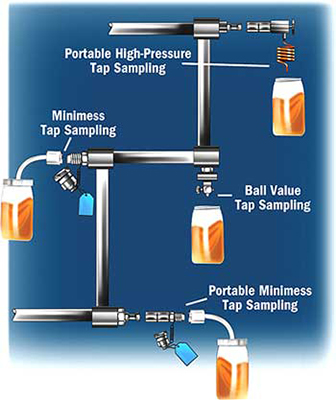
Low or Non-Pressurized Systems
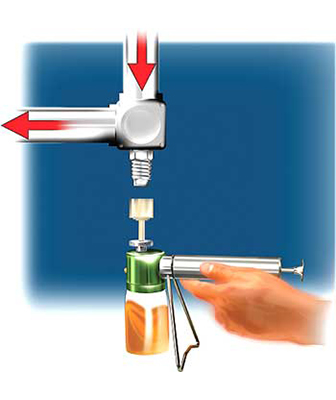
Many gearboxes have limited locations for ports to be installed on. A sample valve with a permanently connected permanent sampling tube can be inserted into the drain port. To acquire the most realistic oil, bend the permanent metal tube and place it close to the gears. The sampling valve with the tube will reach the oil directly in the active zone while avoiding silt from the gearbox's bottom, resulting in representative and trustworthy oil samples.
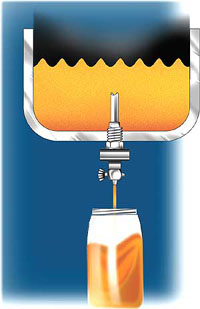
Sampling from Tanks
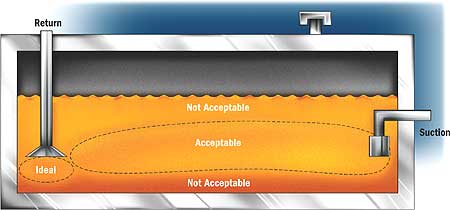
Collecting samples from an ideal location is not always conducive or safe. Other times, sampling ports are absent. In cases such as these, sampling directly from the tank is your only choice. Here are the things to bear in mind when you conduct oil sampling from tanks:
- Collect sample towards the middle, staying away from the bottom and sides. To guarantee that you always get samples from the same region in the tank, use a pitot tube attached to a sampling port placed on the sidewall. Keep in mind that the pitot tube line has an additional dead leg that must be flushed before the bottle can be filled.
- Using a special spring steel sample stick to place the suction tube exactly where you want it each time might help you achieve repeatability. A standoff can be added to the thin flat steel bar to prevent bottom sampling, as well as clasps to retain the tubing.
- When oil goes to the tank, chances are, wear metals and contaminants will settle at the bottom of the tank. This limits your ability to collect samples that truly represent the current condition of your machine. The same can be said in cases when you just get samples from the drain port of the tank.
Defining Success
Understanding reports and following through with recommendations should show a declining trend in the water, particulate, and erroneous oil use statistics. You've enhanced the mean time between failures (MTBF) for those machines by lowering the moisture and particle levels. Based on the moisture decrease, the gearbox should have a 1.25-times increase in MTBF, and a 1.25-times increase in particulate reduction, for a total of more than a 50% improvement in MTBF.
The occurrence of improper oil top-ups may be significantly reduced by investing in fluid identification, adequate dispensing equipment, and, most importantly, training and education. It's more difficult to quantify the savings, but every avoided disaster justifies the improvement.
Source: machinerylubrication.com


